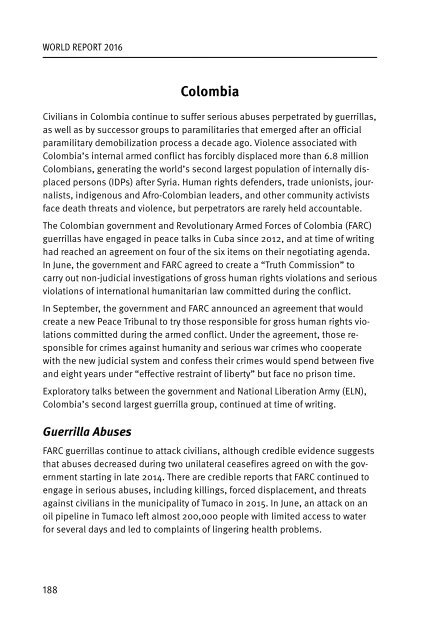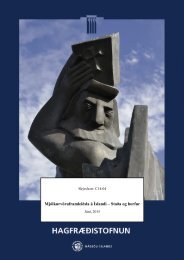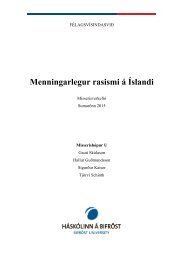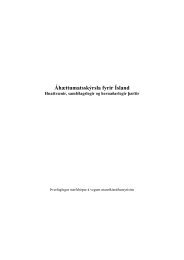You also want an ePaper? Increase the reach of your titles
YUMPU automatically turns print PDFs into web optimized ePapers that Google loves.
WORLD REPORT 2016<br />
HUMAN RIGHTS WATCH<br />
Colombia<br />
Civilians in Colombia continue to suffer serious abuses perpetrated by guerrillas,<br />
as well as by successor groups to paramilitaries that emerged after an official<br />
paramilitary demobilization process a decade ago. Violence associated with<br />
Colombia’s internal armed conflict has forcibly displaced more than 6.8 million<br />
Colombians, generating the world’s second largest population of internally displaced<br />
persons (IDPs) after Syria. Human rights defenders, trade unionists, journalists,<br />
indigenous and Afro-Colombian leaders, and other community activists<br />
face death threats and violence, but perpetrators are rarely held accountable.<br />
The Colombian government and Revolutionary Armed Forces of Colombia (FARC)<br />
guerrillas have engaged in peace talks in Cuba since 2012, and at time of writing<br />
had reached an agreement on four of the six items on their negotiating agenda.<br />
In June, the government and FARC agreed to create a “Truth Commission” to<br />
carry out non-judicial investigations of gross human rights violations and serious<br />
violations of international humanitarian law committed during the conflict.<br />
In September, the government and FARC announced an agreement that would<br />
create a new Peace Tribunal to try those responsible for gross human rights violations<br />
committed during the armed conflict. Under the agreement, those responsible<br />
for crimes against humanity and serious war crimes who cooperate<br />
with the new judicial system and confess their crimes would spend between five<br />
and eight years under “effective restraint of liberty” but face no prison time.<br />
Exploratory talks between the government and National Liberation Army (ELN),<br />
Colombia’s second largest guerrilla group, continued at time of writing.<br />
Guerrilla Abuses<br />
FARC guerrillas continue to attack civilians, although credible evidence suggests<br />
that abuses decreased during two unilateral ceasefires agreed on with the government<br />
starting in late 2014. There are credible reports that FARC continued to<br />
engage in serious abuses, including killings, forced displacement, and threats<br />
against civilians in the municipality of Tumaco in 2015. In June, an attack on an<br />
oil pipeline in Tumaco left almost 200,000 people with limited access to water<br />
for several days and led to complaints of lingering health problems.<br />
The ELN also continues to commit serious abuses against civilians. In the<br />
province of Chocó, for example, the ELN has been responsible for kidnappings,<br />
killings, forced displacement, and child recruitment. In March, ELN guerrillas released<br />
a mayor from that province whom they had kidnapped in December 2014.<br />
The FARC and ELN continued to use antipersonnel landmines in 2015. The government<br />
reported that landmines and unexploded ordnances killed 17 people<br />
and injured 113 between January and July 2015. In May, after an agreement<br />
reached in Cuba, members of FARC and the army started demining the El Orejón<br />
zone in Antioquia.<br />
Paramilitaries and their Successors<br />
Between 2003 and 2006, right-wing paramilitary organizations with close ties to<br />
security forces and politicians underwent a deeply flawed government demobilization<br />
process in which many members remained active and reorganized into<br />
new groups.<br />
Successor groups, often led by members of demobilized paramilitary organizations,<br />
continue to commit such widespread abuses as killings, disappearances,<br />
and sexual violence.<br />
In Buenaventura, a largely Afro-Colombian port on the Pacific coast, atrocities by<br />
paramilitary successor groups that include dismembering victims continued in<br />
2015 despite a “special intervention” initially announced by the government in<br />
May 2014 to dismantle the groups. The municipality has one of the highest rates<br />
of forced displacement in Colombia, with 22,383 residents fleeing their homes in<br />
2014, and 1,385 between January and September 2015.<br />
Successor groups have also engaged in gross abuses in Medellín. In October,<br />
the National Institute of Legal Medicine and Forensic Sciences reported that 24<br />
people had been dismembered in that city in 2015, presumably by successor<br />
groups.<br />
Paramilitary successor groups have at times benefited from the tolerance and<br />
even collusion of state agents.<br />
Implementation of the Justice and Peace law of 2005, which offers dramatically<br />
reduced sentences to demobilized paramilitary members who confess their<br />
crimes, has been slow. As of August 2015, only 115 of the more than 30,000<br />
188<br />
189










